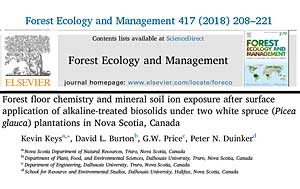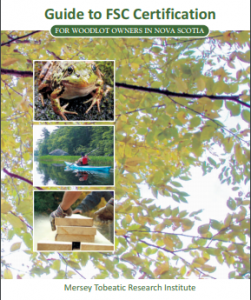For chips from Canada, we do. Sort of. By not specifically addressing Land Use Changes associated with forest bioenergy in GHG accounting, industry and government avoid admitting that many of these schemes are net emitters of GHGs over timeframes meaningful for climate mitigation. There are signs, however, that the Europeans are recognizing serious problems with forest bioenergy sourced from North America.
UPDATE Aug 10, 2018: Responses to questions posed to Climate Change NS about LULUCF Accounting:
As indicated below I had some questions about LULUCF accounting that I said I would ask of Jason Hollett, Executive Director of Climate Change at Nova Scotia Environment. View Questions and Answers
The responses confirm my conclusion that Land Use Changes associated with forest bioenergy are not specifically addressed in GHG accounting related to Paris Agreement etc.
—————-

Curved arrows represent biologically mediated flows of GHGs: the straight arrow, industrial emissions of GHGs; and the symbols at bottom right, long term sequestration of carbon in the oceans. Carbon dioxide is the most important GHG in relation to forestry.
I wrote about Peter Ritchie’s letter to Mr. Jason Hollett, Executive Director of Climate Change at Nova Scotia Environment and the response back on March 25 (view post), and envisaged that post as “the first in a series of posts in which I will try to get a handle on how forest management and the things we choose to produce from our forests affect our ability as a province to reduce the levels of GHGs (Greenhouse Gases) in our (global) atmosphere.”
As seems to happen whenever I get into this topic, I got bogged down with trying to comprehend the myriad of national and international regulations related to GHG emissions, and so it’s taken a while to get to #2 in the series.
Continue reading



 As I said, a rumour.
As I said, a rumour. 



 A cabinet shuffle was announced today with significant changes in responsibilities for forestry. View
A cabinet shuffle was announced today with significant changes in responsibilities for forestry. View  ” On Friday July 6, Pictou harbour will fill with fishing and pleasure boats and the Pictou waterfront with citizens gathered for the first major Nova Scotia #NOPIPE Land & Sea Rally in support of a healthy Northumberland Strait.
” On Friday July 6, Pictou harbour will fill with fishing and pleasure boats and the Pictou waterfront with citizens gathered for the first major Nova Scotia #NOPIPE Land & Sea Rally in support of a healthy Northumberland Strait.